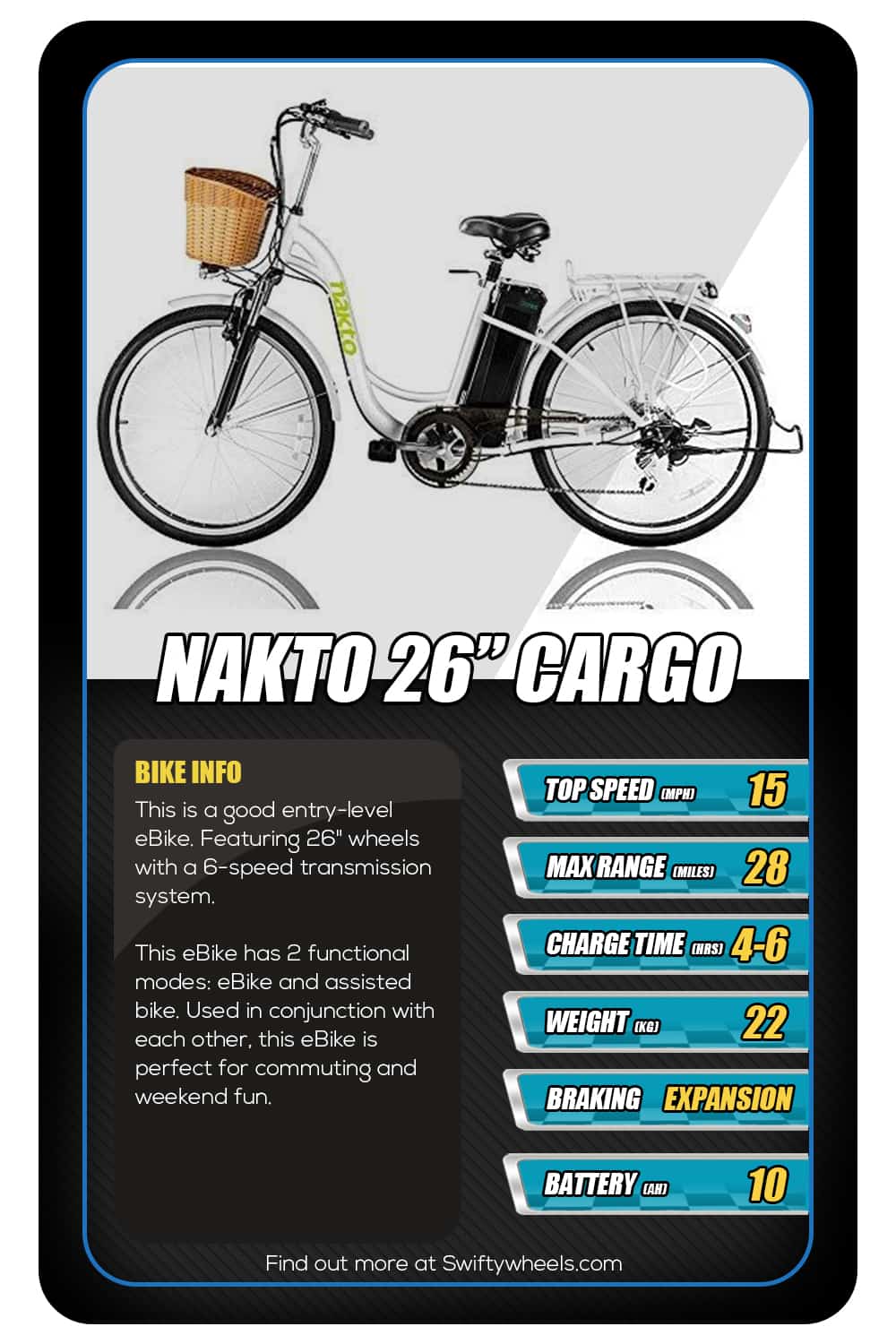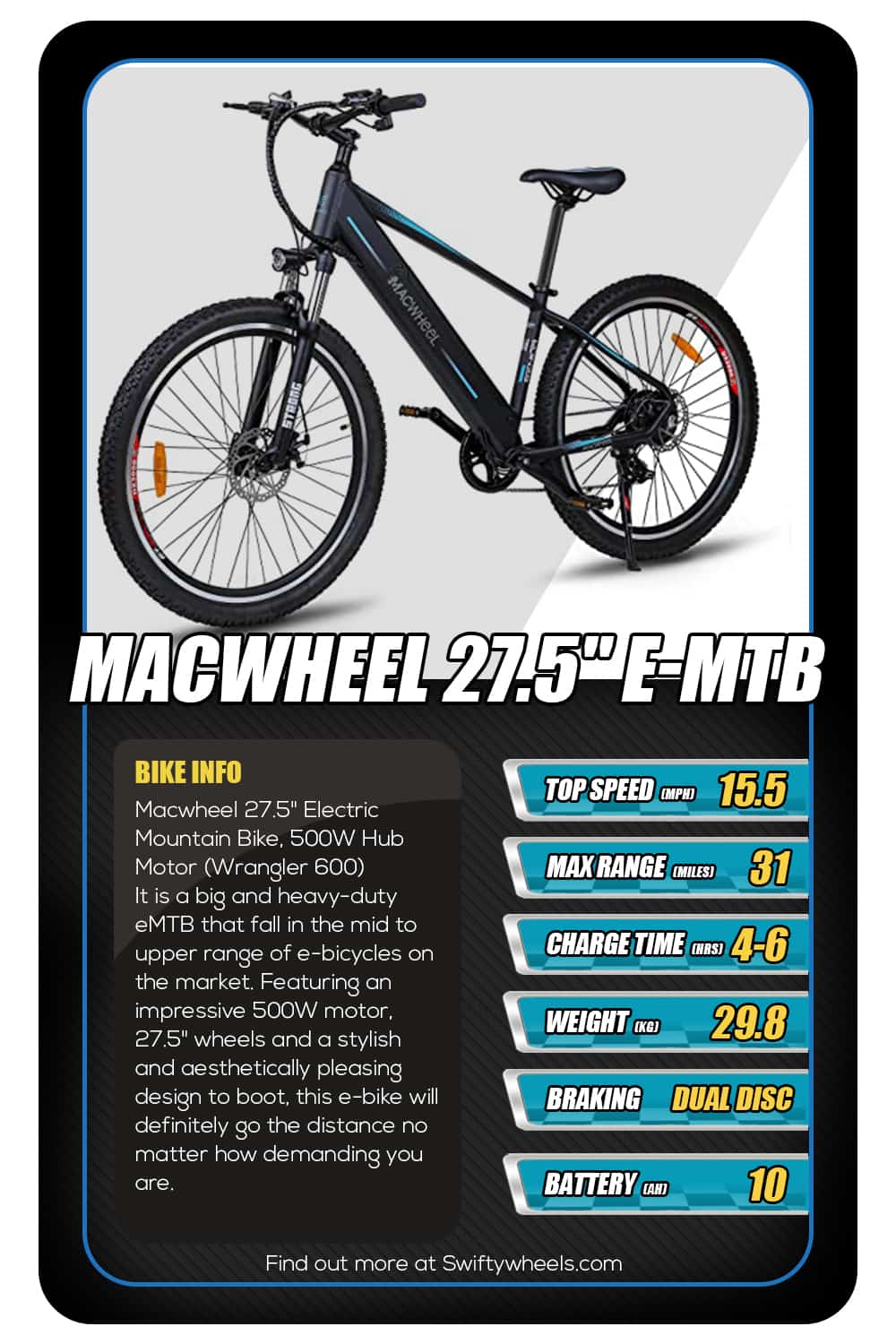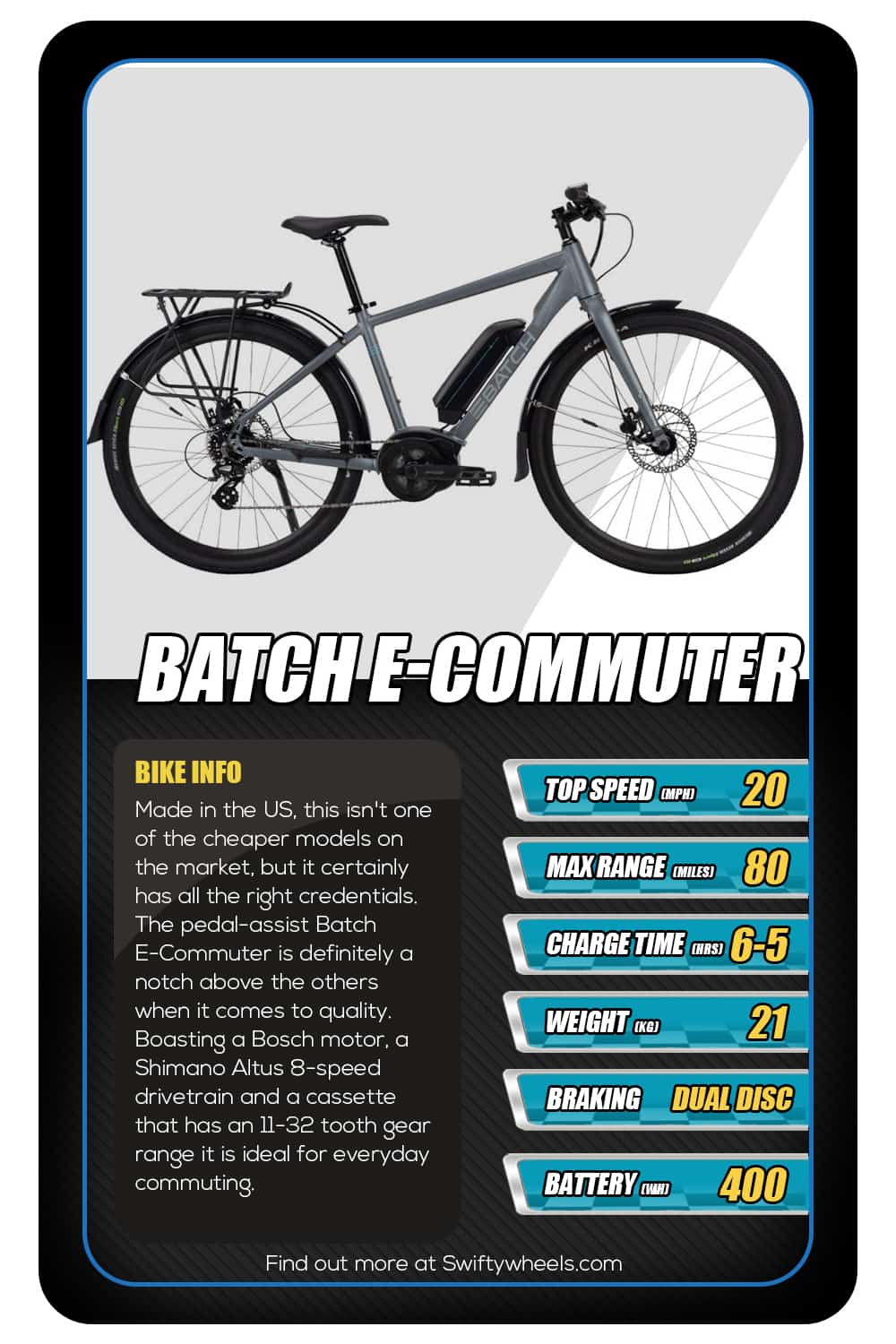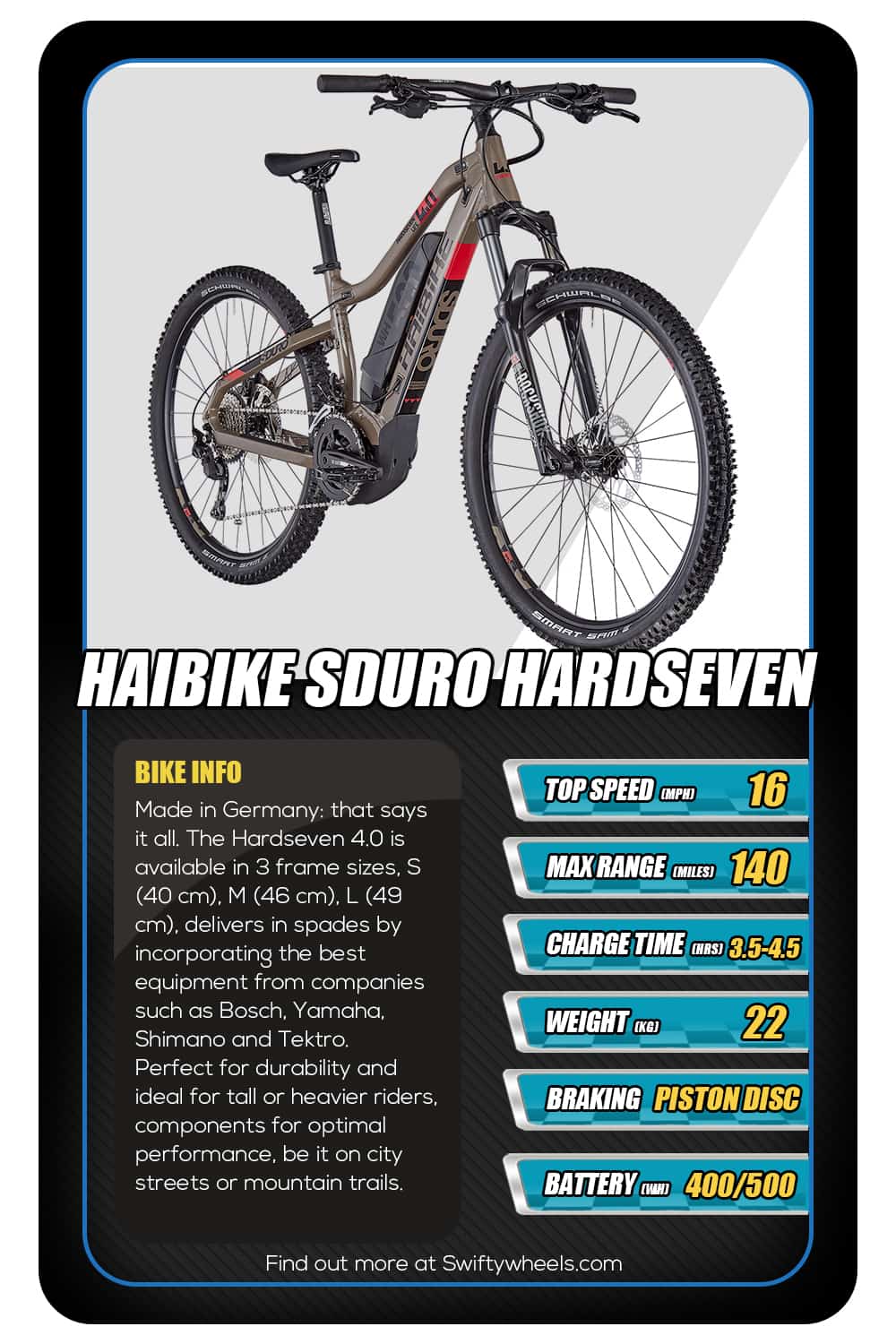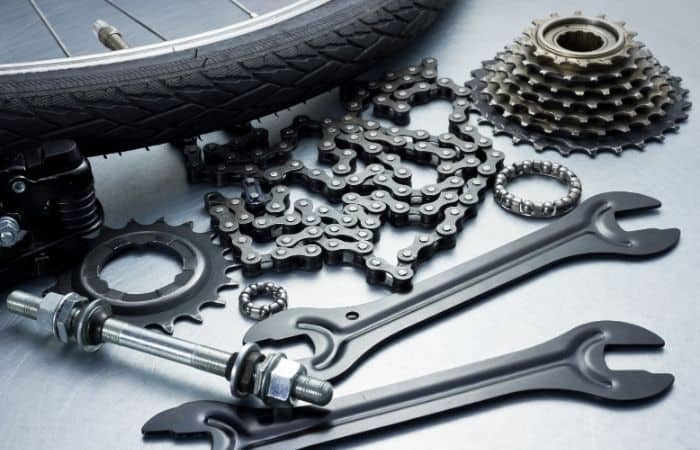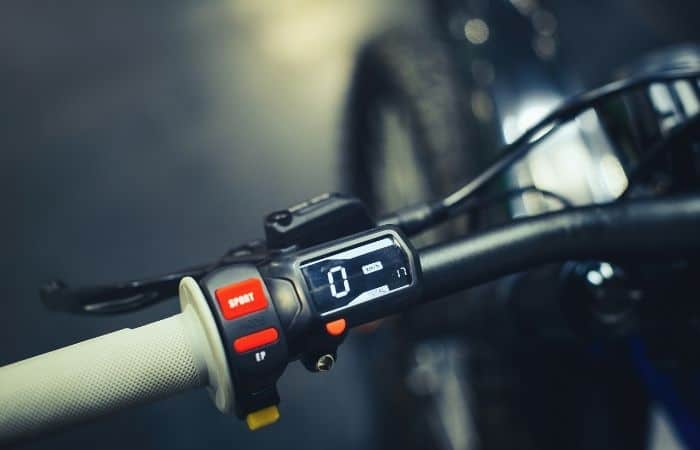Like everyone (well, almost everyone), we’ve fallen into the dreadful routine of working from home and then just shifting over a few metres to the sofa for a dose of Netflix while we eat lunch or dinner (or both). It has become way too easy to order in and binge watch movies these days. So, it’s time for some lifestyle changes. The obvious ones are to get out of the house for fresh air more often, start a diet and most importantly, to exercise!

Brainstorm: I’ll buy a bike. It will fulfil all of these requirements and more… brilliant! But then, no wait… reality check… too much effort for me and the bike will end up being used a few times only, then stored somewhere and forgotten. A friend tells me about her electric bicycle and how she used it to commute to her work during the week and then used it for working out and exploring on weekends.
This was it! A bike that can work as a traditional bicycle then switches to electric assistance on-demand. Perfect! The idea sounds great: electric bikes sound like the ideal solution for today’s urbanites. Now the only thing left to do is decide on which type is most suitable and where to shop for one.
What are Electric Bikes and Are They For Me?
But before we go into which bikes are best for you and where to find them, we need to answer a question that is probably going through your mind at this point. And that question is: what exactly is an electric bicycle (also known as an e-bike) and why should you consider buying one?
An electric bike is simply a regular bicycle with 3 extra components added to it, namely a motor, a battery and a sensor. These components work together to make electric bicycles one of the best solutions for people who love to ride but for one reason or another have been avoiding it due to either joint pains or excess weight. In this article we’ll explain why owning an electric bike makes it easier for anyone, including heavier riders, to get back in the saddle and start riding again.
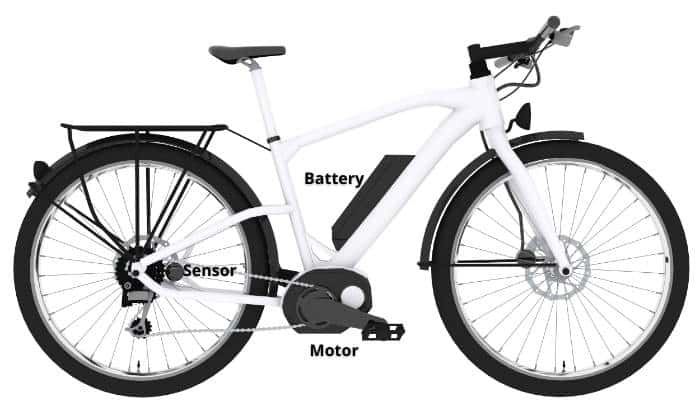
As to the “why”, well, you get all the benefits of a bicycle and much, much more. For example, you can get faster speeds and get excellent acceleration compared to a regular bike, plus you don’t need to worry about the effort of pedalling uphill. Another advantage is that you will exert a lot less effort during commutes to work so you can arrive feeling fresh.
These add up to a safer (i.e. you can accelerate faster going through street intersections), cleaner (for the environment) and a healthier ride since you put less pressure on knee joints, hips, etc. Furthermore, you’ll also have much better control over your speed and distance when riding with others who might have more stamina or are faster or for heavier riders who are slower than you are.
Still not convinced? Then how about if I tell you that you WILL get around much faster when you’re doing errands around town? No traffic jams, you arrive feeling fresh and invigorated, you’ll park closer to where you’re going, and most importantly, you’ll park for free! If just one of these benefits isn’t a good enough reason to own an e-bike, then I don’t know what is.
How Do Electric Bikes Work?
The first of the 3 main components that make up the electric bike’s heart is the motor. There are 3 possible positions for a motor on the e-bike depending on which model you’re considering (selecting the best model for you will depend on price, function, and riding style). The motor can either be located on the front wheel, on the back wheel or the centre of the aluminium-alloy frame of the e-bike.
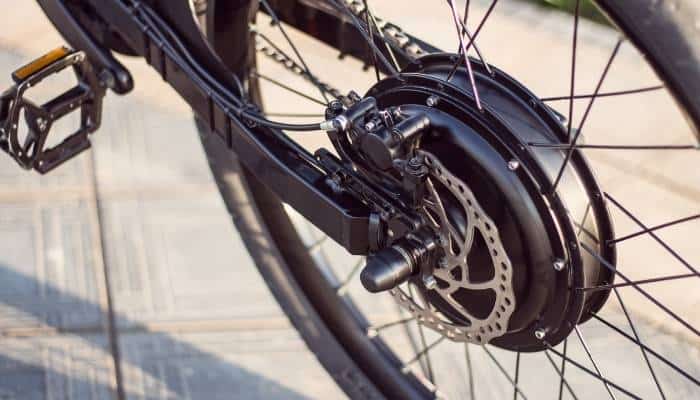
The front-wheel version is the norm for most models. It has performance characteristics somewhat similar to front-wheel-drive cars which gives a feeling of better control and manoeuvrability. In contrast, the rear-wheel version found on the mid-range models is more complex (due to gears on the rear wheel), and gives better traction and grip on road surfaces. The central drive motor is typical of the top-end e-bikes and is mounted in the centre, and lower down on the aluminium-alloy frame. This results in better stability due to a lower centre of gravity and makes the e-Bike feel and handle more like a normal bike.
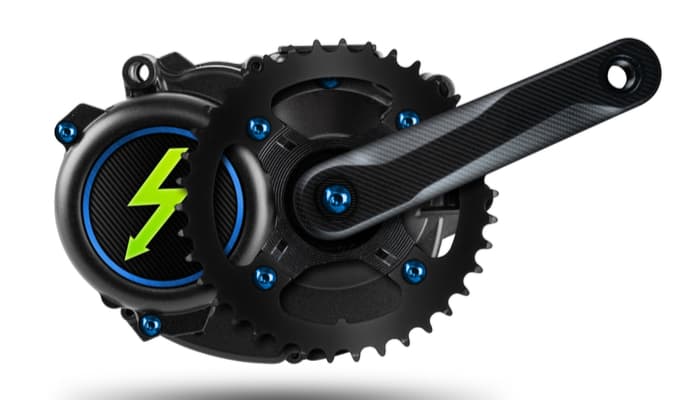
The second component that is key on all electric bikes is the sensor. Sensors also come in either of 2 versions, either a speed sensor or a torque sensor. The speed sensor works by engaging and disengaging the motor based on whenever you start, or stop, pedalling. It engages when it senses that you are pedalling and aids in complementing your effort, and disengages when you stop pedalling, this is akin to an on/off feeling as you ride.
The torque sensor, on the other hand, is more variable and intuitive in its performance. It helps you pedal normally, matching your speed when you ride at slow or normal speeds and gives you higher power once you start pedalling harder on open stretches of road. With its variable speeds, this pedal-assist feature makes it the best option for manoeuvring and cornering performance. Some eBikes feature throttle-assist which is a feature that allows you to cruise without having to pedal… more on that later.
The third, and last component of what makes an e-bike “electric”, is the rechargeable battery. The battery is usually mounted on the lower part of the aluminium-alloy frame, or in some cases, on the rear-rack. This gives more stability as it keeps the weights distributed evenly on the electric bike.
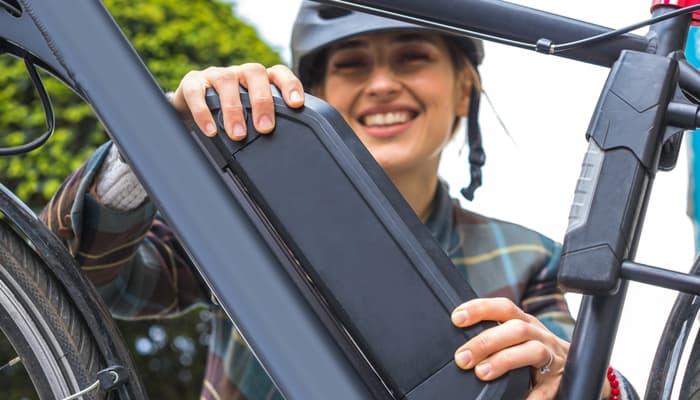
What should I look for when buying an electric bike?
Electric bikes come in many sizes, shapes and functions. Some e-bikes are very basic, some are more geared toward performance and others such electric mountain bikes (e-MTB’s) are designed for serious hobbyists.
So, the first order of the day is to decide your specific needs and do some basic research online. Read customer reviews and educate yourself before taking that leap of making a purchase.
Having determined your needs and done your research, you can start shopping based on the specifications that fulfil your criteria (i.e. e-bikes with higher weight capacity, pedal-assist, etc.). Also, factors such as comfort, battery life (if you intend to ride long distances), the type of motor (will you be using your e-bike for extreme sports, hill climbing, do you need high manoeuvrability, etc.); these should all be considered upfront.
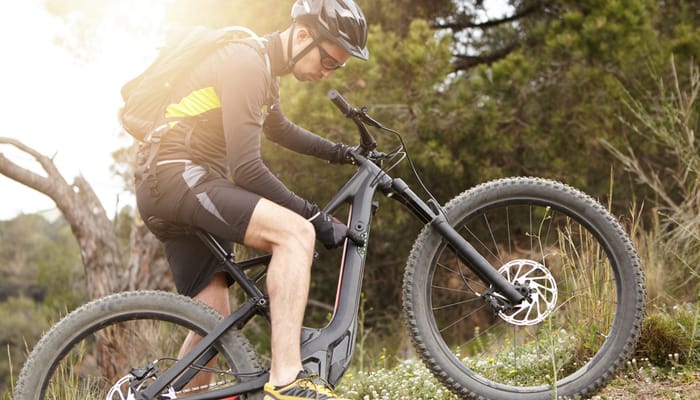
Be a picky shopper. Consider that electric bikes come in many brands, models and makes, so build quality is something you need to look at with a critical eye. Ask about the warranty from the outset. Usually, good quality brands will come with better warranty coverage than lesser e-bikes (on average, coverage should be around 2 years for parts, motor and battery… for normal usage).
When all is said and done, you should ideally test drive some e-bikes. The specifications might look good on paper, but at the end of the day if the bike doesn’t “fit” you and feel comfortable, then you will not be happy riding it.
Can you ride an electric bike without pedalling?
As mentioned above, e-bikes with pedal-assist help you manage your speed depending on how hard you pedal. However, for some people, zero effort is preferable particularly for elderly riders, heavy people, lazy riders (we’re not pointing fingers) or those with health problems that might prevent them from being able to pedal for extended durations; electric bicycles with throttle-assist might be the most suitable option instead.
Throttle-assist works without pedalling, and functions like throttles found on regular scooters or motorcycles: you twist the throttle on the handlebar to engage/disengage the motor. That’s it.
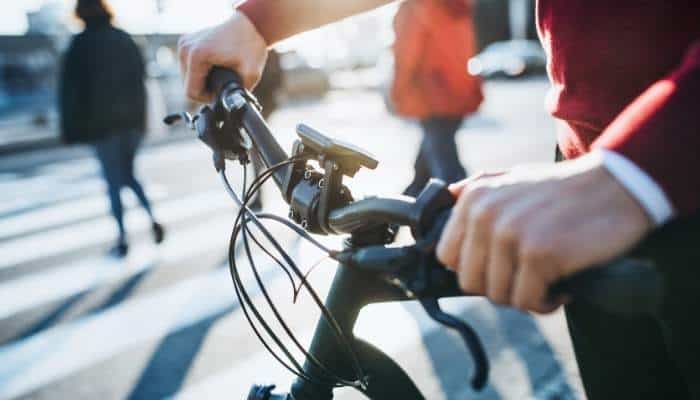
Do electric bikes charge as you ride?
The short answer is: yes, it is possible. Not all e-bikes have this feature, but if you do happen to own one, you will put in A LOT of effort to make this happen. If you are scientifically-minded, the principle is simple, and it is called KERS (Kinetic Energy Recovery System) that basically converts mechanical energy into electrical energy.
You personally will convert mechanical energy (i.e. your legs when you pedal), into electrical energy (charging your eBike’s battery). This is an interesting concept, but not very efficient. For example, if you were to pedal for 10km, you would basically recharge your battery for the equivalent of 1km’s worth of charge. That’s a lot of effort for very little return.
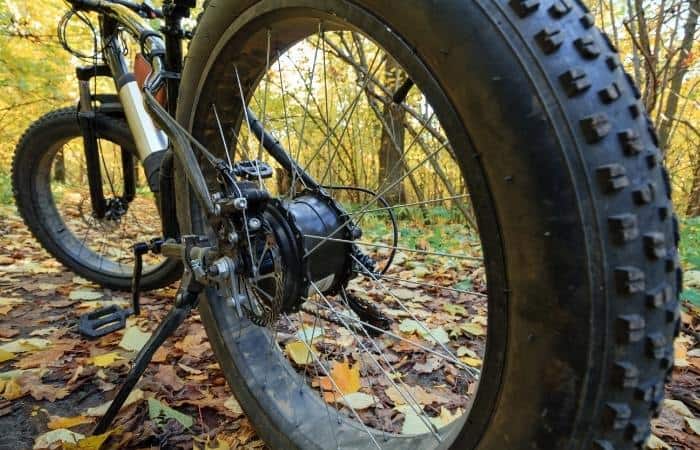
There is also another option of charging-as-you-ride: regenerative brakes. These are also known as “regen brakes” for short, and they are even less efficient than the KERS models. Regen brakes will give you only 5% efficiency… and not only that, but they require a different type of motor called a Direct Drive Motor, which tends to be heavier than your standard e-bike motors.
By definition, these motors have more resistance. The bad news for you is that when you run out of charge (and you will), you will be pedalling against the normal resistance of the elements (wind, road surface, etc.), including your own weight, the weight of the e-bike AND the resistance of the motor.
Needless to say, these 2 options seem nice in theory, but they aren’t particularly efficient. You would be better off paying more for higher-end e-bicycles with larger capacity batteries, higher weight capacity, etc.
Do you still get exercise using an e-bike?
Yes, you absolutely do! In fact, we would go so far as to say that having an electric bike will encourage you to go out and ride more often than if it was just a normal bike. Not only that but most people who consider themselves to be overweight or unfit to ride will find that e-bikes are an ideal solution.
You will have the best of both worlds… normal riding by pedalling and cruising once you need a break from the effort. Heavier riders can also rest assured that most of these bikes can handle higher weight capacities.
They are perfect for weight-loss and cardio workouts, and not to mention fun. Riders from all age groups and with different levels of fitness and capabilities can now ride together. You’ll have the option of controlling the amount of “assistance” the eBike can give you so that you can adjust to others who are riding with you. Basically, with an electric bike, you are in control.
The Top 5 Best Electric Bikes for Heavy Riders
ANCHEER 250W Electric Mountain Bike
This is one of more heavy-duty electric mountain bikes (eMTB) that falls in the mid-range of e-bicycles on the market. Featuring strong 26″ wheels, disc brakes in the front and rear and a 21-speed transmission system. This e-bike has 3 functional modes: electric-bike, assisted bike and normal bike. Used in conjunction with each other, this eBike is perfect for commuting and weekend fun.
Ancheer Video Review >
Spec
- Top speed: 24 km/h (15 mph)
- Max. range: 25 – 50 km (15 – 30 mi) depending on usage
- Charging time: 4-6 hours (fast charging)
- Weight: 23 kg. (50 lbs.)
- Braking: Dual disc brakes
- Battery: Lithium battery (36V 8Ah)
- Load capacity: 150 kg. (330 lbs.)
Pros
- Multi-purpose e-bike (road, cross and mountain)
- 250W high-speed brushless gear motor with 34 NM torque
- Strong aluminium-alloy frame
- Value-for-money
Cons
- Assembly instructions not very clear (you can use online videos)
- Wiring might come loose after riding over rough terrain (regular visual inspection suggested)
- Customer service responsiveness not ideal
- Battery life
NAKTO 250W Cargo Electric Bicycle
This is a good entry-level eBike. Featuring 26″ wheels with a 6-speed transmission system. This eBike has 2 functional modes: eBike and assisted bike. Used in conjunction with each other, this eBike is perfect for commuting and weekend fun.
Nakto Cargo Video Review >
Spec
- Top speed: 24 km/h (15 mph)
- Max. range: 30 – 45 km (22 – 28 mi) depending on usage
- Charging time: 4-6 hours (fast charging)
- Weight (approx.): 22 kg. (48 lbs.)
- Braking: High-Quality Front V Brake, Rear Expansion Brake
- Battery: Lithium battery (36V 10Ah)
- Load capacity (average): 125 kg. (275 lbs.)
Pros
- 300W High-Speed Brushless Motor
- Strong carbon steel frame and forks
- Value for money
- Customer support
Cons
- Assembly instructions not very clear (you can use online videos)
- Battery quality
Macwheel 27.5″ Electric Mountain Bike, 500W Hub Motor (Wrangler 600)
Definitely one of our favourites. Big and powerful are the keywords with the Macwheel e-bike. It is a big and heavy-duty electric mountain bikes (eMTB) that fall in the mid to upper range of e-bicycles on the market. Featuring an impressive 500W motor, 27.5″ wheels and a stylish and aesthetically pleasing design to boot, this e-bike will definitely go the distance no matter how demanding you are.
Spec
- Top speed: 25 km/h (15.5 mph)
- Max. range: 40 – 50 km (25 – 31 mi) in electric mode and depending on usage
- Charging time: 4-6 hours (fast charging)
- Weight: 29.8 kg. (65.7 lbs.)
- Braking: Tektro front and rear disc brakes
- Battery: 48V 10Ah Removable Battery
- Load capacity: 125 – 159 kg. (275 – 350 lbs.) – estimated
Pros
- Multi-purpose eBike
- 500W brushless motor mounted on the rear wheel
- 5 adjustable levels of assistance
- 48V 10Ah battery
- Intelligent LCD
- Wires and battery neatly concealed within the frame (easily accessible with keys)
Cons
- Check for missing or improperly tightened bolts.
- Speed below average
- No rear light deflector for safety
- Some reports of damaged parts on delivery
BATCH BICYCLES E-COMMUTER EBIKE 2020
Made in the US, this isn’t one of the cheaper models on the market, but it certainly has all the right credentials. The pedal-assist Batch E-Commuter is definitely a notch above the others when it comes to quality. Boasting a Bosch motor, a Shimano Altus 8-speed drivetrain and a cassette with an 11-32 tooth gear range it is ideal for everyday commuting. It is quick, agile and has one of the best ranges you will find on an e-bicycle.
Batch E-Commuter Video Review >
Spec
- Top speed: 32 km/h (20 mph)
- Max. range: 128 km (80 mi) depending on usage and terrain
- Charging time: 6.5 hours
- Weight: 21 kg. (46.5 lbs.)
- Braking: Tektro Hydraulic Disc with 180mm Rotors
- Battery: Bosch Lithium-ion 400wh
- Load capacity: N/A
Pros
- Smooth ride with excellent mileage per single charge depending on usage and terrain
- Bosch Active Line Gen 3 250W motor
- Strong aluminium-alloy frame
Cons
- Lights not included (sold separately)
- Grips and saddle not very comfortable
HAIBIKE SDURO HARDSEVEN 4.0
Made in Germany: that says it all. The Hardseven 4.0 is available in 3 frame sizes, S (40 cm), M (46 cm), L (49 cm), delivers in spades by incorporating the best equipment from companies such as Bosch, Yamaha, Shimano and Tektro. Perfect for durability and ideal for tall or heavier riders, this eBike features high-end engineering design from frame to balancing all the components for optimal performance, be it on city streets or mountain trails.
Spec
- Top speed: 25 km/h (16 mph)
- Max. range: 48 – 225 km (30 – 140 mi) power-assisted, depending on battery/usage and terrain
- Charging time: 3.5 hours (400wh) / 4.5 hours (500wh)
- Weight: 22 kg. (48.5 lbs.)
- Braking: Shimano, MT400, 180 mm, 2-piston disc brake (front and rear)
- Battery: Bosch Power Tube 400wh / 500wh
- Load capacity: 120 kg (265 lbs.)
Pros
- Smooth ride with excellent mileage per single charge depending on usage and terrain
- Bosch Performance Line (65Nm)
- Strong aluminium-alloy frame
- Quick-release wheels
- 4 levels of assistance (Eco+, Eco, Standard and High)
- Warranty (5 years for frame, 2 years for battery/electronics and 1 year for wheels)
Cons
- Lights not included (sold separately)
- No room for a bottle cage, pump etc. on frame
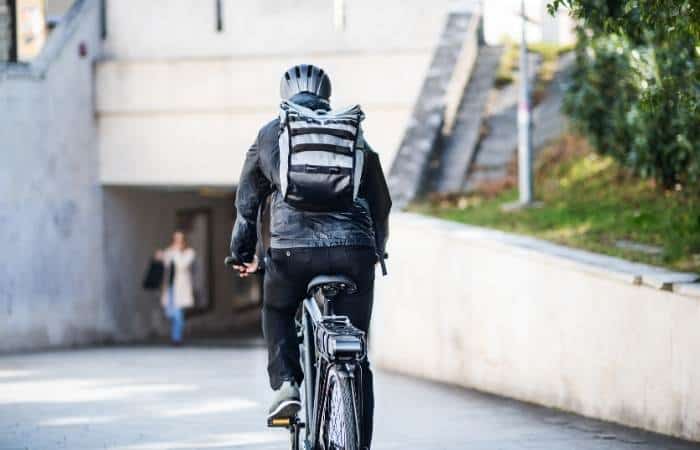
As you can see above, there are some fantastic eBike options for heavier riders. Whether you are after something for your daily commute or a rugged eMTB to session some trails, there really are different options for everyone.
If you’d like to look ar some of the troubleshooting issues with Electric Bikes, please click HERE




